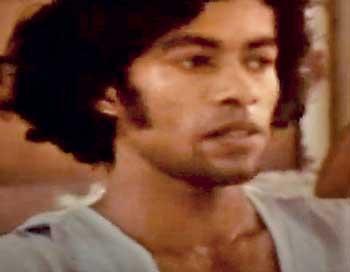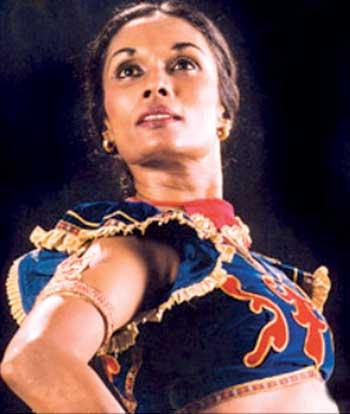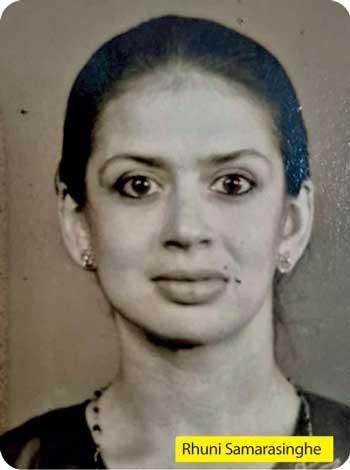
Lionel Bentharage
- When Douglas’s analysis of what is considered ‘taboo’ is applied to dance in Sri Lanka, it reveals the multiplicity of problems faced by those who break from the constrains of an establishment.
- Dance institutions around the world believe in encouraging their students to push boundaries, expand their knowledge, and explore the unknown -often to the point where those who teach become learners themselves.
 Cultural and national traditions, along with the rules and values they impose, exert a powerful influence on the human psyche, often discouraging any deviation from what is deemed ‘pure.’ Through this mechanism, established hierarchies are able to maintain control, reinforce order, and preserve a collective identity.
Cultural and national traditions, along with the rules and values they impose, exert a powerful influence on the human psyche, often discouraging any deviation from what is deemed ‘pure.’ Through this mechanism, established hierarchies are able to maintain control, reinforce order, and preserve a collective identity.

01.‘Purity and Danger’ the seminal work published by Mary Douglas in 1966 analyses the ways in which societies define boundaries and maintain order through cultural symbols and taboos. She shows that to examine what is considered unacceptable (referred to as ‘unclean’ in her text) in any culture is to take a looking-glass approach to the ordered patterning which that culture strives to establish and maintain. Such an approach affords a universal understanding of the rules of purity which applies equally to secular and religious life and to primitive and modern societies.
 |
| Khema |
This book is frequently referenced by lecturers in dance and choreography, particularly at institutions such as the Laban Centre, where it is widely held that the development of movement is intrinsically linked to its socio-cultural context. They use it to illustrate the challenges dancers and choreographers face when working within rigid rules, codified techniques, or when choosing to break away from established norms.
When Douglas’s analysis of what is considered ‘taboo’ is applied to dance in Sri Lanka, it reveals the multiplicity of problems faced by those who break from the constrains of an establishment. By moving out and creating their own careers some tend to defy the recognised hierarchical order. Those who do, are often ostracised and treated as if they are pollutants.
Our dance teachers are known for expecting lifelong, unquestioning loyalty from their students. Those who choose to leave or think independently are often labelled as "deviants" and face systematic exclusion as a result.
Douglas explains this by saying ‘the natural response of the old-timers (traditionalists) is to build a strong moral wall against the outside. This is where the world starts to be painted in black and white, saints inside, and sinners outside the wall.’
Dance institutions around the world believe in encouraging their students to push boundaries, expand their knowledge, and explore the unknown -often to the point where those who teach become learners themselves. Unfortunately, this same spirit of openness
02.and generosity is rarely extended to students by dance teachers in our country.
When I first met my choreography teacher Stuart Hopps at the Laban Centre, he gave me a copy of Doris Humphrey’s ‘The Art of Making Dances’ and said, ‘Read this – and tear it up!’ My outlook on dance changed from that day. Since then, I have keenly observed practitioners of many Indian dance forms expand their techniques by skilfully tearing their traditional vocabulary apart and recreating their own choreographic language which stays faithful to the origins but has the courage to deviate from it too. Our traditional dance forms have not moved or expanded in a comparable manner. Those who have steered away from it have simply vulgarized it and made it look cheap while others stay strictly within the boundaries of what has been handed down.
Apart from a few young dancers who are daring to create their own style of movement, the recognised dance troupes still subconsciously resort to using the instructions from the ancient Natya Sashtra and Humphrey’s book which was published in 1959. The fear of change makes the material they produce – predictable.
The promotion of fearlessness and non-conformity is incompatible with the traditional guru-shishya paradigm that underpins our traditional dance practices. The pupils are meant to be in the dark until the guru and the guru alone decides to lead them to the light. The guru’s knowledge seems to be a jealously guarded commodity that is handed out piecemeal. The results of this are that family and favourites take precedence over fairness and forward thinking. I do not need to expand on this matter as the evidence is visible. Just look at the soloists and those who are centre stage in any dance recital or in any troupe and you will be able to connect the dots.
Some may argue that a member of the family is best suited to be cast in the lead role, and I wholeheartedly agree – however the obvious conclusion to this is that they have the privilege of one-to-one tutoring that is not available or offered to the others.
I have seen many performances in Colombo at which some dancers in the background shine and exhibit the technical ability and confidence that makes them stand out as stars of the future. However, history has proved that these dancers are either consigned to the corps de ballet forever or they fade into obscurity.
The custom of preserving the status quo under the guise of protecting ‘purity' has become a double-edged sword. This practise is largely to blame for the problem. Several dancers have been known to leave in sheer frustration after realizing that they would never be given a fair opportunity to succeed.
As Mary Douglas posits ‘I am sure that it must be true that people opt out because they feel that there are going to be no rewards for them, if they stay.’
This leads me to the story of two women who stepped beyond the lines drawn for them, their dance was a quiet rebellion and a beacon for those who wished to follow - a graceful claim to a future they made their own.
Sometime in the late seventies, the Lionel Wendt Theatre was abuzz with excitement. Something new and unfamiliar was unfolding. Khema and Rhuni were stepping out on their own in a dance recital titled Sri Rangamala. Holding on to the inspiration they took from their personal icons, such as Chandralekha and Vajira, these two women had the courage to break away from the ranks and emerge as technically skilled soloists,
 03.taking charge of their own artistic futures.
03.taking charge of their own artistic futures.
As the title suggests this ‘garland of dances’ began with the traditional ‘magul bera’ and the blowing of the conch shell before the curtain went up. Khema opened the show in an item called ‘Bhavana.’ Swathed in gold gauze she moved slowly and beautifully creating an unforgettable series of poses that gradually developed into a traditional Kandyan item. A dreamlike atmosphere was created by side lighting which was never brought up to its full capacity throughout the item. It captured her movements in a way that gave the impression of a golden statue of a deity coming to life.
This was followed by crescendo of drums during which Rhuni made a dramatic entrance leaping on to the stage along with her partner Lionel in a fantastic rendering of a ‘Mayura Vannama.’ Costumed in peacock blue with gold and black this pas de deux was utterly scintillating. Khema and Rhuni did two more items in which they dance together. One was a very traditional piece of Kandyan dancing in which they wore costumes in the accepted colours of red and white. The other was a beautifully choreographed ‘Gajaga Vannama’ in which the designer for this show followed his vision and broke with convention. Kirthi Sri Karunaratne who designed the costumes went against every known and accepted use of fabric that was associated with traditional costuming and opted for black velvet, silver lamé with purple and silver sequins. The effect was magical as was the dance itself.
The evening included a ‘Gini Sisila’ and a traditional ‘Ves’ item which was expertly executed by Lionel Bentharage. This gave the two stars some breathing space and time for quick costume changes. While the aforementioned items remained well within the norms of accepted traditions, there were three items in this show that moved beyond convention, extended boundaries and opened our eyes to another way of reinterpreting our traditional dance vocabularies.
Rhuni performed a piece titled ‘Raga,’ set to the rhythmic vibes of a sitar and tabla. Dressed in vibrant orange and gold, adorned with flowers and classical Indian jewellery, she began this item seated on the floor, evoking a sense of tradition and reverence. Seamlessly blending our own dance forms with Indian motifs, poses, and expressions, she created a powerful and memorable
 04.piece of dance. Her movements were executed with such clarity and precision that it remains etched in my memory. It is unfortunate that the public only witnessed this piece during that single performance. Raga was a timeless work that should have been preserved and passed down to the younger generation as a significant example of fusion within of our dance heritage.
04.piece of dance. Her movements were executed with such clarity and precision that it remains etched in my memory. It is unfortunate that the public only witnessed this piece during that single performance. Raga was a timeless work that should have been preserved and passed down to the younger generation as a significant example of fusion within of our dance heritage.
Following this, Khema performed a piece titled ‘Devol.’ She brought a traditionally male-dominated Low Country dance to the stage as a solo performance. In a powerful display of dazzling technique, she embodied the masculine energy and wild intensity that this dance demanded, while captivating the audience with her beauty and commanding stage presence. The blood red costume, the unusual headdress and her long untamed black hair added to the mesmerising effect she had on those who watched her. This piece, typically associated with ritual and exorcism, was specially choreographed for her by Low-Country dance teacher – Dayaseela. Her performance brought the house down. This groundbreaking item sparked a renewed interest in Low Country dance, which had previously been regarded as less significant than Kandyan dance. Inspired by her audacity, many others followed suit and began exploring this extraordinary style.
The recital concluded with a captivating narrative ballet titled Bandura Mala, performed as a duet by Khema and Lionel. It told the simple story of a carnivorous flower that lures and devours a curious bee. Conceived and choreographed by Khema’s mother, Ouida Keuneman, this piece opened with Khema crouched centre stage, gradually unfolding like a blooming flower. Kirthi created yet another stunning costume in white and purple. The pleated silk gathered at the hips moved gracefully throughout the dance echoing the delicate beauty of a blossom swaying in the breeze.
Instead of the frequently used applique embroidery, Kirthi opted to use sequins, lace, and bead work. Adding yet another original touch to this enchanting piece was a wonderful orchestral score composed by Premasiri Khemadasa.
Sri Rangamala proved to be the turning point that inspired many of us. Following this event, Khema's career soared to stratospheric heights, establishing her as one of the most recognized dancers in Sri Lanka. Meanwhile, Rhuni continued to dance purely for the love of it.
Looking back at this quiet watershed moment, I hope that such events inspire a new wave of dancers to defy convention, script their own stories, and become unapologetic rebels with a cause.










